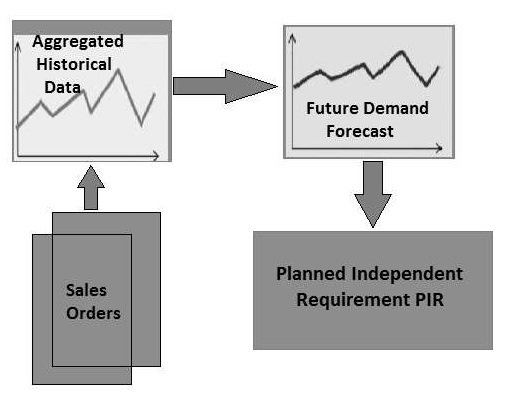
- SAP Simple Logistics Tutorial
- SAP Simple Logistics - Home
- SAP Simple Logistics - Overview
- Main Components
- Simplification Item
- Business Partner
- SAP Simple Logistics - MIGO
- Check Simplification List
- SAP Fiori UX
- Deployment Types
- Supply Chain Planning
- Integrated Business Planning
- Create PIR
- MRP Procedures
- MRP Key Features
- Procurement Types
- Execute MRP Live
- Operational Procurement
- Invoice Management
- Contract Management
- Perform Procurement & Transfer Stock
- Manufacturing
- Execute Discrete Production
- Create a Business Partner
- Analyze Incoming Sales Orders
- Job Responsibilities
- SAP Simple Logistics Resources
- SAP Simple Logistics - Quick Guide
- SAP Simple Logistics - Resources
- SAP Simple Logistics - Discussion
SAP Simple Logistics - Supply Chain Planning
In S/4 HANA system, Supply Chain Management process is divided into different steps, out of which few steps are executed by S/4 HANA components and others by SCM component. SAP S/4 HANA and SCM system is integrated together for planning and Core Interface is used for integration.
Following processes can be performed by using the components in Supply Chain Management −
- Demand Planning (DP)
- Supply Network Planning (SNP)
- Production Planning and Detailed Scheduling (PP/DS)
- Global Available-to-Promise (ATP) Check
- Transport Planning/Vehicle Scheduling (TP/VS)
Demand Planning
You can use demand planning to plan future demand for specific customers, regions, or sales organizations. Demand planning allows you to forecast future demands and you can create both quantity-based and value-based plans.
You define the planning level using characteristics in the system. All the planning data in demand planning is stored in the form of key figures and it contains a numerical value.
Using time characteristics, you can view, plan, and store the data. Historical data is imported to SAP NetWeaver BW system of SCM with the use of BW extractors.
Various mathematical methods can be used to analyze historical data for demand planning.
- Moving average
- Constant model
- Trend model
- Seasonal model
- Exponential smoothing
In analyzing historical data, you can use various constant models for products with historical data that changes little over time.
In Demand Planning, seasonal models are used for seasonal products. As per requirement, there can be different seasonal products - candles, ice creams, etc.

In the above image, you can see the demand planning process flow. The Sales Order details provide the basis for forecasting future demands. With the forecast result, the demand plan is released as Planned Independent Requirement (PIR).